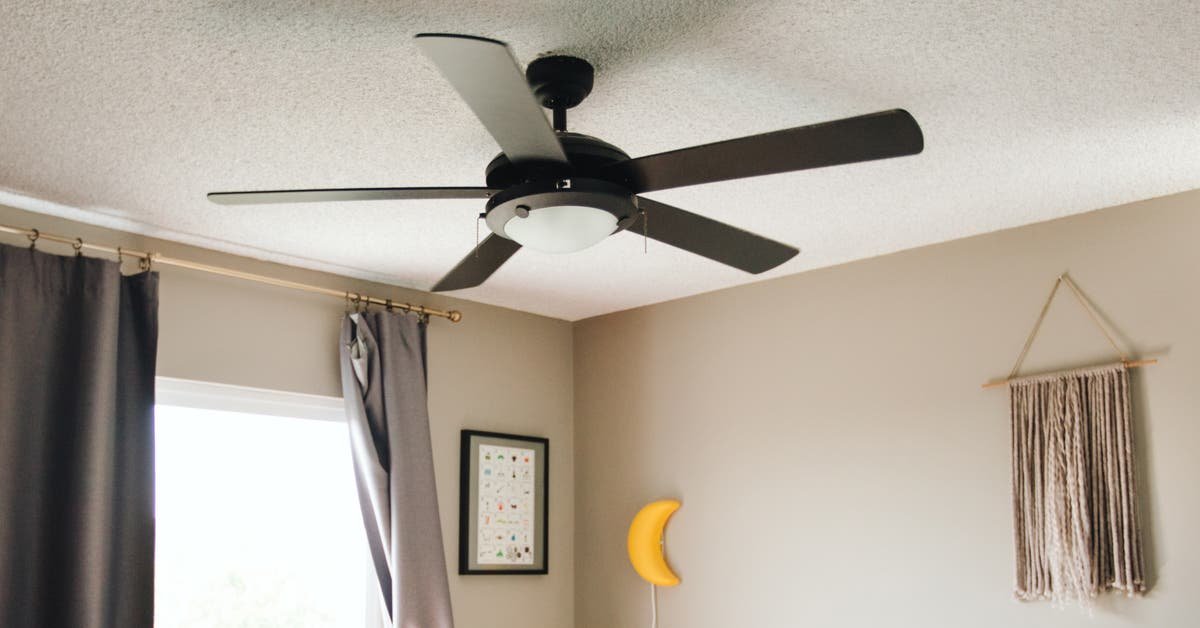
Between the selections at The Home Depot, Lowe’s, and specialty retailers like Hansen Wholesale and CeilingFan.com, you have literally thousands of models to choose from. And that onslaught of options comes with plenty of overwhelming questions. How many blades? How long should they be? What’s the CFM rating? Do you need a flush mount or a downrod? Is there a difference? Should you follow the Energy Star recommendations to maximize your energy efficiency? What should you expect to spend, anyway?
These technical specifications can certainly be important (and we get to them below). But in our experience—from talking with electricians, dissecting fan motors, and installing plenty of models ourselves—we’ve found that buying a ceiling fan can be a lot simpler than that. Choose something that’s well made, doesn’t cost too much, and has reliable customer support in case anything goes wrong. If you follow those basic criteria, you should get everything else you’d be looking for: silent operation, no vibration, maintenance-free durability, and the ability to revolve.
Price and brand
Avoid the cheap, budget-model fans you can find at big-box stores—especially the lowest-priced options from Hampton Bay and Harbor Breeze. In the words of the Chicago electrician who helped me install a total of six ceiling fans in two places, none of those big-box models are quite as good as a $100 Westinghouse is right out of the box. He said he was impressed with its solid-feeling motor and overall ease of assembly, as well as its hardware, which he poetically described as “not bad.” That’s a small but telling description that revealed a lot about the quality of some of the cheaper fans he’s had to work with.
This doesn’t mean that all the fans from big-box stores are bad or that all the fans from more fan-focused manufacturers are good. But you’ll at least have a better shot at success if you can go for a top seller from one of the big brands like Big Ass Fans, Fanimation, Hunter or Casablanca, Kichler, Minka-Aire, or Westinghouse, just to name a few.
Blade size
When it comes to the fan blade, just go large. A 52-inch blade diameter is a common bigger size that offers reliable control over wind speed and typically has a larger motor, which means it’s more likely to run silently and last a long time.
If you’re worried that a larger fan might look out of place, don’t be. I once installed a Westinghouse Comet 52-Inch in a child’s bedroom that was about 10 by 8 feet, which is serious overkill by conventional standards. It looked kinda big for the space if you really stopped and stared at it, but it never really caught my eye after the day I installed it, and nobody said anything when we sold the place the following year. When it comes to ceiling fan aesthetics, “not noticing it” is pretty much ideal.
Sound
When we installed smaller fans in two of the bedrooms at our old house, they had a distinct high-pitched hum at every speed. Not a ridiculous amount, but not the total silence we got from a larger fan like the Westinghouse Comet. (I might not have even noticed if the electrician hadn’t pointed it out to me after the installation, saying, “Man, you hear that fan? That noise’d drive me crazy!”) They also didn’t move as much air at lower speeds, so we had to run them faster, which produced a louder hum and probably consumed a little more electricity, too. On warm days when I turned on the smaller and larger fans in succession, I just shook my head at the little ones’ noise. Again, there are probably quite a few good fans that can operate silently at any speed, and there are even some really bad ones that can tick or click or make a wah-wah sound after some use.
Airflow
Manufacturers specify a fan’s airflow in CFM (cubic feet per minute), an objective measurement, but I’ve found subjectively that there’s something a bit nicer about the way the breeze feels coming off a wider-diameter fan on a slow speed versus a smaller fan that has to work harder and spin faster to get the same churn going in the room. The narrower fan feels more like a sharp, focused beam of air, and the bigger one feels more like a gentle waft.
Most fans should also have an option to let you reverse the direction of the fan. The general rule for using this feature is to run the fan clockwise in the winter (to pull the cool air up) and counterclockwise in the summer (to push the cool air down).
Mounting
Any decent ceiling fan (like the Westinghouse Comet) comes with multiple mounting options right in the box. Typically, you can install it flush to the ceiling or use the included downrod to extend it from a higher ceiling. If you have angled ceilings, however, you may need to purchase a separate adapter.
Customer support and company reliability
One of the things that really distinguish the more prominent manufacturers (like Westinghouse) from the big-box store brands is the ability to get actual support for your specific model. Sure, you can usually return any fan to a big-box store, so you’re not out of luck if something goes wrong right away. But it’s a little more likely that Westinghouse (or Big Ass Fans, Fanimation, Hunter, Kichler, Minka-Aire, or The Modern Fan Company) can send you a replacement part if needed, answer an unusual question if something odd is happening with your fan, or maybe even replace an older model if something goes wrong later.





